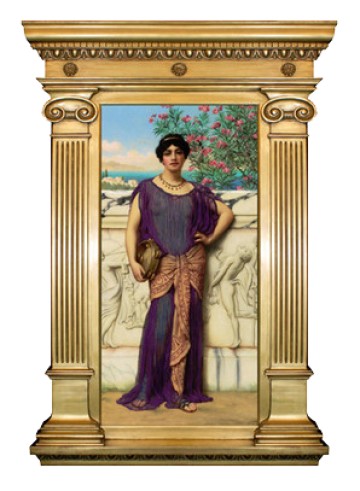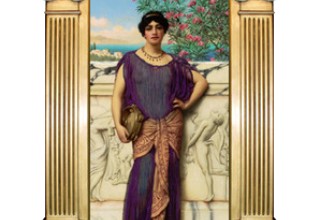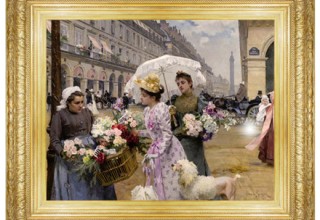Eli Wilner Talks About Five Points to Consider When Choosing a Frame for a Painting

New York, NY, April 30, 2015 (Newswire.com) - A picture may be worth a thousand words — but it speaks even more eloquently when you have it properly framed. "Frames have a lot of power to influence our appreciation and interpretation of a painting," says Eli Wilner, the founder of Eli Wilner & Company, a New York-based gallery responsible for frames found in homes across the world, as well as at the Smithsonian American Art Museum, Metropolitan Museum of Art, and the White House. But before selecting a frame, you need to make sure it's the right one.
Most essential, according to Wilner, is historical accuracy. "A frame should reflect the period of the painting," he says. "I want to imagine that I'm the artist. I've just completed the painting and gone to my favorite framer. How would the artist approach the design? That's how I make every decision, whether it's for Rembrandt or Corot or John Singer Sargent." Also important: does the style of frame complement the painting itself? "Aesthetic consideration is crucial. After I narrow it down to the type of frame an artist would use, I look at the scale, decorative elements, and color that enhance a particular artwork."
"Frames have a lot of power to influence our appreciation and interpretation of a painting,"
Eli Wilner, CEO and Founder
To illustrate what you should keep in mind the next time you're ready to frame, Wilner was asked to match some of his company's selections with lots in Sotheby's recent19th Century European Art sale.
History (See attached images)
"I do not know a single major painter who did not spend a significant amount of time thinking about his frames. Even van Gogh, who had no money, made his own frames and painted them to match the piece inside. Godward (above) saw himself as a Renaissance painter and in that style and tradition, wanted to create the same feeling of importance and religious experience that he saw in church altarpieces traveling throughout Rome and Florence. Since that was his design, that is the only way a Godward can really be appreciated. If you put his painting in a lesser, more simple frame, the work loses the true, holistic meaning that Godward meant to convey."
Taste
"Although I usually frame as if I were the artist, 10% of the time I frame as if I were the collector. I occasionally like to throw a curve ball. Corot mostly used fluted, quiet 19th-century frames, but the more elaborate 18th-century approach (above) is very popular and how you'll see Corot framed in many museums and private homes. The soft carving in the frame works very well with the composition."
Scale
"There's no general rule when in comes to scale except that you should avoid over-framing and under-framing. Everything else depends on the aesthetics of the individual artwork. Here is a portrait of a modest flower-seller in late 19th-century London, so I felt the frame needed to be restrained. A thinner frame would have looked too slight on the large canvas, while a thicker one would have been too grand for the subject. It's all about balance. When you put a sculpture on a pedestal, the same considerations have to be met. Ask yourself: Is the frame too wide, too delicate, too overpowering, or just right for the piece?"
Decorative Elements
"Because of its exotic subject matter, I chose an Orientalist frame for Gérôme’s painting. The decorative marks, similar to what you'd see in the Middle Eastern wing at the Met or at the Alhambra Palace in Spain, puts you into the mindset that you're in the Middle East. Yes, a 19th-century French frame would technically work. But this frame changes your perception and shows the context that a frame can bring to a work of art."
Color
"This is a very pretty and charming picture, so I picked a bright gold frame to echo the happiness of the scene. I wanted to turn up the dial on the beauty of the flowers and patterned fabrics by making the frame as opulent as I could without going overboard. Again, you have to let the painting speak."
About Eli Wilner & Company
Recognized as the foremost worldwide authority on antique frames, and founded in 1983, Eli Wilner & Company specializes in American and European frames from the 17th-through mid-20th centuries. Clients include fine art collectors, major art and historical institutions as well as The White House, where he has created 28 frames for its collection and the frame for Washington Crossing the Delaware at the Metropolitan.
With an atelier composed of a team of thirty highly skilled artisans, including 15 frame conservators, and over 10,000 custom framing projects completed to date, Eli Wilner & Company takes pride in each project. Every frame is handcrafted to not only reflect the time in which the painting was created, but also to best reflect the framing choices known to be made by the artists themselves.





